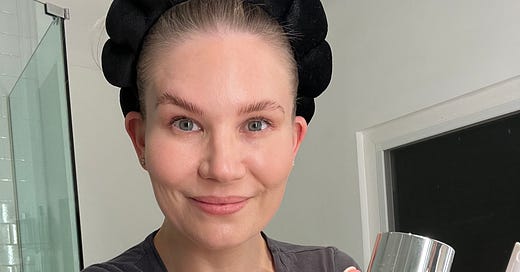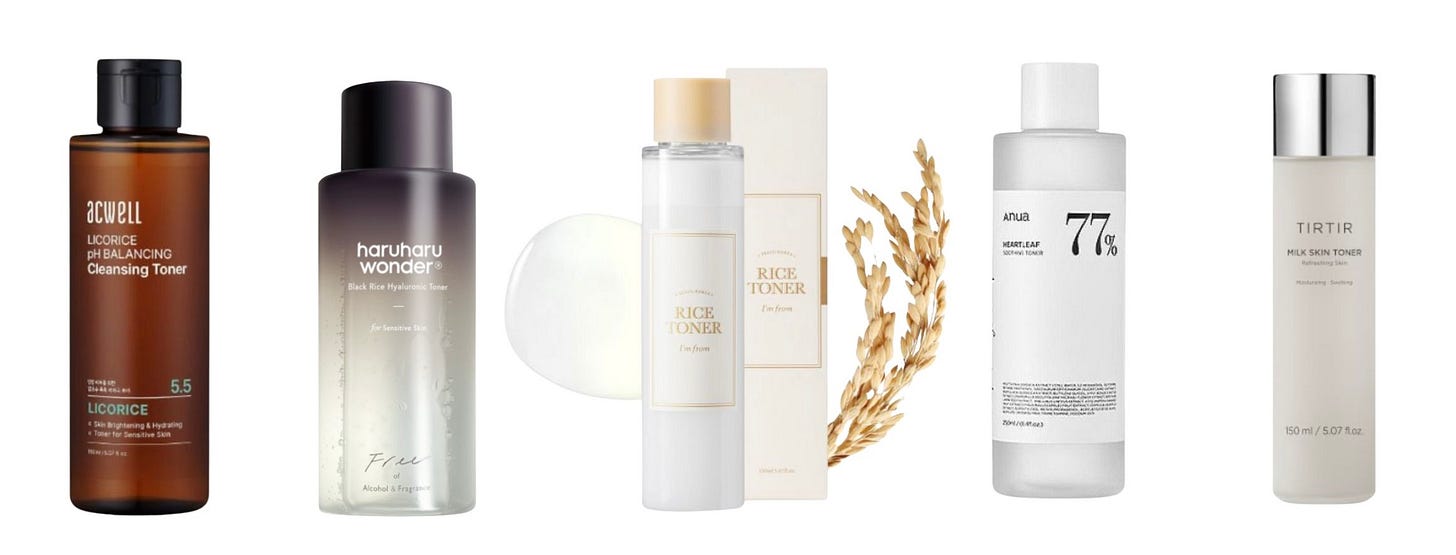If we share the same algorithm then you’ve been drowning (pun intended) in skin flooding videos lately. Women drenching their faces in watery toners, one after another, calling it “skin flooding”— but what even is skin flooding?? While this may look like the latest Western skincare trend, it actually has deep roots in Korean beauty — where hydration layering has been a skincare staple for years. (Because of course it has!)
Okay, so what Is Skin Flooding?
It’s a skincare technique that involves applying several layers of hydrating products — usually toners and essences — to damp skin in quick succession. Please notice how I emphasized the hydrating part. The idea is to "flood" the skin with moisture before sealing it all in with a moisturizer or an occlusive. There’s little to no waiting in between steps and most importantly, no harsh actives involved. This technique is all about giving your skin deep, lasting hydration.
What we’re now calling “skin flooding” is essentially a modern remix of the 7-skin method, a K-beauty technique focused on building moisture layer by layer for a glowing, dewy complexion.
The Origins: What Is the 7-Skin Method?
The 7-skin method emerged from the Korean skincare community and gained traction globally around the mid-2010s. In Korean skincare, the word “skin” also means toner and in this case we are talking about toners that are lightweight, water-based products with hydrating and soothing ingredients.
In this method, you apply up to seven layers of hydrating toners to clean, damp skin. Each layer is gently patted in, allowing it to absorb but not fully dry before the next is applied. The result is deeply moisturized skin without the heaviness of thick creams.
Why seven? There’s nothing magical about the number — it simply represents layering until your skin feels plump and saturated, but not sticky or overloaded. For some, three layers might be enough. For others, seven feels just right. Look, I didn’t make it up, I’m just telling where it came from!
The technique is gaining new life on social media under a different name — skin flooding — thanks to its instant, visible payoff. Skin looks plumper, glowier, and more refreshed within minutes. And in a world where skincare routines can sometimes feel overly complex or harsh, this trend offers a simple return to the basics: cleanse, hydrate, lock it in.
But Does It Actually Work?
Yes but more for some than others and this will, naturally, depend on your age and your skin type. Both skin flooding and the 7-skin method rely on the power of humectants — ingredients like hyaluronic acid, glycerin, and aloe that draw water into the skin. By applying these ingredients in multiple layers while the skin is still damp, you maximize hydration and support your skin’s natural barrier.
It’s worth noting that I personally see it trending with the 30+ crowd. From what I can tell, more mature skin types tend to see better/more noticeable results. I have always applied products to damp skin so I don’t notice a crazy difference.
That said, skin flooding can help reduce redness, improve texture, and make skin appear smoother and more elastic. And it's especially beneficial for those dealing with dryness, dehydration, or a compromised barrier. Unlike trends focused on exfoliation or actives like retinoids, skin flooding is gentle and supportive — making it safe for most skin types, even sensitive ones.
How to Try It
To get started, cleanse your skin as you normaly would, then mist it or leave it damp. Choose a lightweight, hydrating toner or essence and apply a thin layer. I like to wait about 30 - 60 seconds depending on how fast the product dries before I follow with another layer of the same product, or a different one with similar benefits. Repeat this two to seven times depending on your skin’s needs. Then, finish with a moisturizer to seal in the hydration. If your skin is extra dry, you can add a face oil or balm as a final step at night.
*NOTE* Stick with hydrating products only — NO acids, vitamin C, retinoids or exfoliants!! Those products are all great if used correctly, but layering them will irritate your skin and potentially compromise your skin’s barrier. If you don’t know if a product is hydrating, it’s best to avoid it.
*NOTE #2* you can add toners/essences to a spray bottle if it makes it easier. You can also add in growth factors, peptides and stem cells as long as they don’t also include actives and don’t irritate your skin at all. I highly recommend anything with centella asiatica in it — a lot of labels will call it “cica”.
If you are looking for product suggestions here are 7 products that are commonly used in skin flooding:
Lately I start with a spray. Either this hydrating mist from Josh Rosebrook that’s been in my arsenal for years or this stone crop mist from Eminence.
Then, I follow it up with this toner from SKII that’s made from sake and keeps skin looking younger longer.
Some of the most popular toners for skinflooding are Korean (naturally) and they are:
Acwell’s Balancing Toner, Haruharu Wonder’s Black Rice Hyaluronic Toner, Anua’s Heartleaf 77% Soothing Toner, Tirtir’s Milk Skin Toner and/or the Rice Toner.
The good news is all of these are 10$ - 20$.
Once you have your thinner products loaded, go ahead and layer your favorite exosomes/stem cells and seal it in with your moisturizer of choice. Currently, I’m using this from One or this one from Korea.
As a reminder: Sprays and clear toners first, then the milky ones, then anything thicker (like exosomes or snail mucin).
The TL;DR
Skin flooding may be trending now, but it’s hardly new. Whether you call it the 7-skin method or skin flooding, the principle is the same: your skin thrives when it’s deeply hydrated.
OH! AND DON’T FORGET YOUR NECK AND CHEST
Okay that’s all.
xo, Rory







